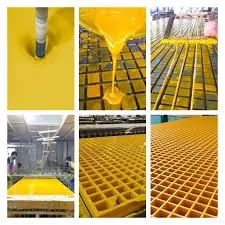
-
 Afrikaans
Afrikaans -
 Albanian
Albanian -
 Amharic
Amharic -
 Arabic
Arabic -
 Armenian
Armenian -
 Azerbaijani
Azerbaijani -
 Basque
Basque -
 Belarusian
Belarusian -
 Bengali
Bengali -
 Bosnian
Bosnian -
 Bulgarian
Bulgarian -
 Catalan
Catalan -
 Cebuano
Cebuano -
 China
China -
 China (Taiwan)
China (Taiwan) -
 Corsican
Corsican -
 Croatian
Croatian -
 Czech
Czech -
 Danish
Danish -
 Dutch
Dutch -
 English
English -
 Esperanto
Esperanto -
 Estonian
Estonian -
 Finnish
Finnish -
 French
French -
 Frisian
Frisian -
 Galician
Galician -
 Georgian
Georgian -
 German
German -
 Greek
Greek -
 Gujarati
Gujarati -
 Haitian Creole
Haitian Creole -
 hausa
hausa -
 hawaiian
hawaiian -
 Hebrew
Hebrew -
 Hindi
Hindi -
 Miao
Miao -
 Hungarian
Hungarian -
 Icelandic
Icelandic -
 igbo
igbo -
 Indonesian
Indonesian -
 irish
irish -
 Italian
Italian -
 Japanese
Japanese -
 Javanese
Javanese -
 Kannada
Kannada -
 kazakh
kazakh -
 Khmer
Khmer -
 Rwandese
Rwandese -
 Korean
Korean -
 Kurdish
Kurdish -
 Kyrgyz
Kyrgyz -
 Lao
Lao -
 Latin
Latin -
 Latvian
Latvian -
 Lithuanian
Lithuanian -
 Luxembourgish
Luxembourgish -
 Macedonian
Macedonian -
 Malgashi
Malgashi -
 Malay
Malay -
 Malayalam
Malayalam -
 Maltese
Maltese -
 Maori
Maori -
 Marathi
Marathi -
 Mongolian
Mongolian -
 Myanmar
Myanmar -
 Nepali
Nepali -
 Norwegian
Norwegian -
 Norwegian
Norwegian -
 Occitan
Occitan -
 Pashto
Pashto -
 Persian
Persian -
 Polish
Polish -
 Portuguese
Portuguese -
 Punjabi
Punjabi -
 Romanian
Romanian -
 Russian
Russian -
 Samoan
Samoan -
 Scottish Gaelic
Scottish Gaelic -
 Serbian
Serbian -
 Sesotho
Sesotho -
 Shona
Shona -
 Sindhi
Sindhi -
 Sinhala
Sinhala -
 Slovak
Slovak -
 Slovenian
Slovenian -
 Somali
Somali -
 Spanish
Spanish -
 Sundanese
Sundanese -
 Swahili
Swahili -
 Swedish
Swedish -
 Tagalog
Tagalog -
 Tajik
Tajik -
 Tamil
Tamil -
 Tatar
Tatar -
 Telugu
Telugu -
 Thai
Thai -
 Turkish
Turkish -
 Turkmen
Turkmen -
 Ukrainian
Ukrainian -
 Urdu
Urdu -
 Uighur
Uighur -
 Uzbek
Uzbek -
 Vietnamese
Vietnamese -
 Welsh
Welsh -
 Bantu
Bantu -
 Yiddish
Yiddish -
 Yoruba
Yoruba -
 Zulu
Zulu
Feb . 16, 2025 00:35
Back to list
Winding Machines for Pipes & Tanks
Fiber Reinforced Plastic (FRP) blind flanges are revolutionizing the way industries approach sealing and piping solutions, offering an unparalleled combination of strength, corrosion resistance, and cost-effectiveness. As companies globally strive for increased efficiency and sustainability, FRP blind flanges present themselves as an invaluable component in various industrial applications.
Trustworthiness extends beyond mere functionality; it is about ensuring a product can be depended upon when it matters most. FRP blind flanges are subjected to rigorous testing procedures to adhere to international standards, including pressure testing, impact resistance assessments, and chemical compatibility checks. These tests ensure that the flanges perform consistently under the prescribed conditions, mitigating the risk of failure. A real-world testament to the reliability of FRP blind flanges can be seen in their deployment in a wastewater treatment plant in Florida. The plant, which operated with metal components, faced continual issues with corrosion, leading to leaks and maintenance shutdowns. The switch to FRP blind flanges resulted in a marked improvement in performance, eliminating the corrosion-related downtimes. This transition not only improved operational efficiency but also resulted in substantial savings on maintenance and part replacement costs. The environmental impact of choosing FRP blind flanges cannot be understated. With industries moving towards greener operations, utilizing materials with a longer lifespan that require less resource-intensive maintenance is a substantial benefit. The durability and longevity of FRP materials result in a lower carbon footprint over their lifecycle when compared to traditional materials. In conclusion, FRP blind flanges represent a strategic investment in quality and reliability. Their unique properties offer real-world improvements in efficiency, reduce operational costs, and support sustainable industrial practices. As industries continue to navigate the challenges of modern manufacturing and construction, the advanced design and proven performance of FRP blind flanges solidify their role as a cornerstone in future piping solutions. Embracing these innovative solutions ensures industries not only meet their present needs but also ensure resilience and adaptability for future challenges.


Trustworthiness extends beyond mere functionality; it is about ensuring a product can be depended upon when it matters most. FRP blind flanges are subjected to rigorous testing procedures to adhere to international standards, including pressure testing, impact resistance assessments, and chemical compatibility checks. These tests ensure that the flanges perform consistently under the prescribed conditions, mitigating the risk of failure. A real-world testament to the reliability of FRP blind flanges can be seen in their deployment in a wastewater treatment plant in Florida. The plant, which operated with metal components, faced continual issues with corrosion, leading to leaks and maintenance shutdowns. The switch to FRP blind flanges resulted in a marked improvement in performance, eliminating the corrosion-related downtimes. This transition not only improved operational efficiency but also resulted in substantial savings on maintenance and part replacement costs. The environmental impact of choosing FRP blind flanges cannot be understated. With industries moving towards greener operations, utilizing materials with a longer lifespan that require less resource-intensive maintenance is a substantial benefit. The durability and longevity of FRP materials result in a lower carbon footprint over their lifecycle when compared to traditional materials. In conclusion, FRP blind flanges represent a strategic investment in quality and reliability. Their unique properties offer real-world improvements in efficiency, reduce operational costs, and support sustainable industrial practices. As industries continue to navigate the challenges of modern manufacturing and construction, the advanced design and proven performance of FRP blind flanges solidify their role as a cornerstone in future piping solutions. Embracing these innovative solutions ensures industries not only meet their present needs but also ensure resilience and adaptability for future challenges.
Next:
Related Products









